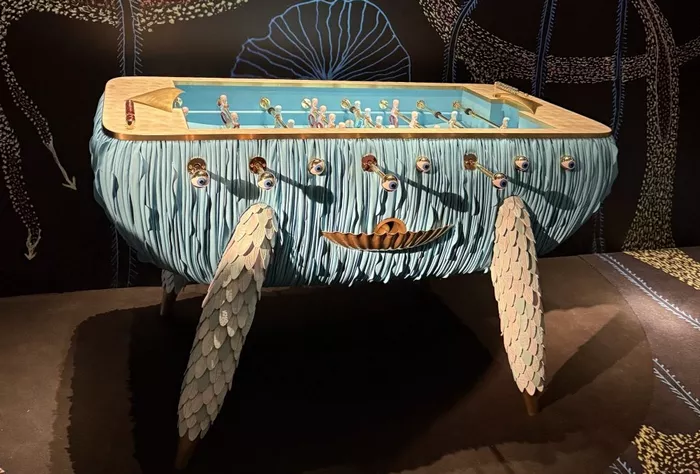Milan Design Week 2025 saw luxury fashion houses elevate design beyond the realm of traditional garments, celebrating artisanal craftsmanship and creative experimentation. This year’s edition underscored how the fashion industry continues to support and amplify design as a multifaceted discipline. Through innovative collaborations and talent development, these powerhouses offered unique exhibitions that brought new ideas to life, while reshaping the future of luxury and design.
One of the standout exhibitions was Loewe’s collection of teapots, which continued the brand’s tradition of collaborating with international artists to reimagine everyday objects. For its ninth edition, Loewe gathered 25 artists, designers, and architects to create new interpretations of the humble teapot. Held at the stunning Palazzo Citterio, the collection displayed a range of designs, from whimsical oversized lids by Rose Wylie to the ethereal perforated porcelain of Akio Niisato. Other artists, like Simone Fattal and Patricia Urquiola, brought unique textures and playful forms to the teapot, proving that even the most everyday objects could be elevated through material experimentation.
Hermès also presented an immersive and poetic exhibition at La Pelota Jai Alai, where a minimalist installation curated by Charlotte Macaux Perelman explored objects as latent dreams. The exhibition’s ethereal designs, particularly in glassmaking, showcased how materials like blown and fused glass could turn functional objects into works of art. Among the highlights was Tomàs Alonso’s ‘Table d’appoint,’ a delicate yet striking design that blended natural wood and lacquered glass, while Nigel Peake’s porcelain collection featured hand-painted watercolor friezes that transformed a simple table setting into a canvas of quiet elegance.
Louis Vuitton’s Objets Nomades collection also made waves at Milan Design Week, reaffirming the brand’s dedication to merging fine craftsmanship with contemporary design. Hosted at the Palazzo Serbelloni, the collection featured limited-edition pieces by designers like Estúdio Campana, India Mahdavi, and Jaime Hayon. The exhibition brought together hybrid creations such as the playful Calcio Balilla foosball table and the innovative Caleidoscopio Cabinet, seamlessly blending Louis Vuitton’s heritage of travel with sculptural, functional art.
Gucci unveiled its most ambitious design project to date with Bamboo Encounters, an immersive installation that celebrated the longstanding legacy of bamboo in the brand’s history. Set in the Chiostri di San Simpliciano, the exhibition featured collaborations with seven designers and studios, each exploring bamboo through personal stories and unique design approaches. One notable collaboration included Palestinian artist Dima Srouji, who combined crafted bamboo baskets with delicate glass sculptures from West Bank artisans. The diverse and imaginative interpretations of bamboo highlighted the material’s cultural significance and versatility in contemporary design.
Finally, Prada’s fourth edition of Prada Frames, curated by the design studio Formafantasma, explored the theme of movement and infrastructure. Held at Milan’s Stazione Centrale, the event brought together experts from astrophysics, architecture, and activism to discuss how global mobility systems, digital networks, and societal structures influence our lives. The symposium facilitated cross-disciplinary dialogue on pressing issues such as space travel, artificial intelligence, and climate justice, reinforcing Prada’s commitment to shaping the future of design through collaboration and intellectual exchange.
Through these exhibitions, Milan Design Week 2025 demonstrated how luxury fashion houses are embracing the power of collaboration and craftsmanship to create transformative experiences that resonate far beyond fashion itself.
Related Topics
- A-Listers Celebrate the Launch of SA Fashion Week at Hyde Park
- Spring Fashion Shows Bloom in the Twin Cities
- Middle East Fashion Weeks Rise as Global Hubs

